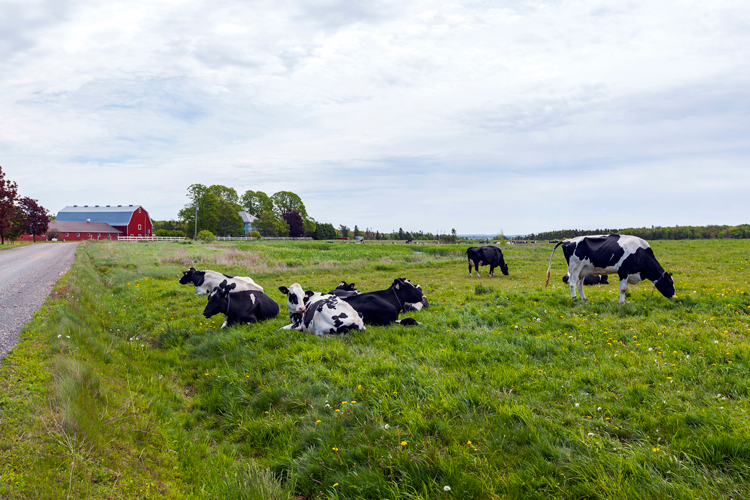Hoard's Dairyman:
Dairy’s building a better environmental tool
March 18, 2024
By Nicole Ayache, Chief Sustainability Officer, National Milk Producers Federation

The Farmers Assuring Responsible Management Environmental Stewardship Program (FARM ES) is collaborating with the Innovation Center for U.S. Dairy to integrate a new, process-based model for greenhouse gas (GHG) accounting: the Ruminant Farm Systems (RuFaS) model. This rigorous, science-based (but user friendly) approach will position FARM ES as the key on-farm tool to support U.S. dairy community efforts to achieve its 2050 environmental stewardship goals, including to become GHG neutral or better. FARM ES is the U.S. dairy industry’s unified platform to track and aggregate on-farm environmental progress, with a suite of informational resources to support continuous improvement.
FARM ES will begin using RuFaS as its underlying GHG quantification model starting this summer with Version 3. This introductory launch will contain the core elements of the RuFaS model to enable farm-level GHG footprinting and scenario analyses, which help support informed decision-making about the adoption of practices and technologies. Further elements — like enhancements to the energy data inputs and conducting economic analyses — will be added to FARM ES as they become available through ongoing RuFaS research.
A key focus of the remainder this year will be to collect farmer, FARM evaluator, and other stakeholder feedback so the new platform can be refined in 2025.
Real-world refinement
The FARM Program relies on stakeholder feedback and guidance from the scientific experts at Dairy Management Inc. to guide its process of continuous improvement. Input from dairy farmers, cooperative and processor staff, and researchers informed the need to upgrade the GHG model that powers FARM ES. Stakeholders consistently requested a tool that can deliver insights as they evaluate opportunities to further improve on-farm environmental outcomes.
 Stakeholder engagement and participatory research continue to be essential as FARM ES begins the work to integrate the RuFaS model. A working group composed of farmers and staff from dairy cooperatives and processors meet with RuFaS researchers to discuss the scientific model and tool functionality. The multi-stakeholder working group has met seven times so far, covering the animal, manure, feed, energy, and economic RuFaS modules and giving feedback on the structure of data inputs, desired functionality for the new FARM ES tool, and more.
Stakeholder engagement and participatory research continue to be essential as FARM ES begins the work to integrate the RuFaS model. A working group composed of farmers and staff from dairy cooperatives and processors meet with RuFaS researchers to discuss the scientific model and tool functionality. The multi-stakeholder working group has met seven times so far, covering the animal, manure, feed, energy, and economic RuFaS modules and giving feedback on the structure of data inputs, desired functionality for the new FARM ES tool, and more.
More than 25 farms volunteered to participate in scientific model validation to support RuFaS calibration and refinement, with data collection complete in 2023. The volunteer farms ranged in size from 50 head to over 15,000 head and represent diverse geographies and production styles, including tie stalls, freestalls, dry lost, grazing, and more. The farms and the evaluators that supported their data collection were invited to provide written feedback and join live feedback sessions. They provided helpful guidance on topics such as ease and challenges in collecting and interpreting the data inputs, quality of data collection training in fully equipping evaluators, and the structure of the results report.
With the introduction of FARM ES Version 3, FARM will create feedback forms for farmers and FARM evaluators to provide suggestions. FARM also will host stakeholder webinars to foster discussion about the new platform.
This summer’s launch will bring exciting updates to FARM ES. They are only the beginning of the journey toward a more scientifically robust tool that brings greater insights to participating dairy farmers.
This column originally appeared in Hoard’s Dairyman Intel on March 18, 2024.






